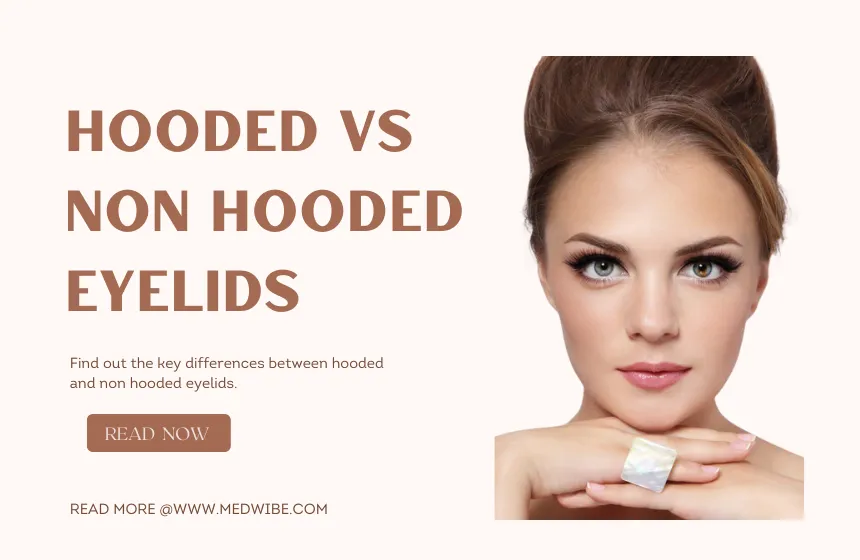Key Features
- Hooded eyelids cover the eyelid crease due to extra skin, making the eyelid look smaller. Non-hooded eyelids show more of the eyelid, and the crease is clear.
- Genetics, aging, ethnicity, lifestyle factors (like sun exposure and smoking), and certain health conditions are some causes of hooded eyes.
- As you age, your skin gets less firm, and the muscles around your eyes weaken, making your eyelids look more hooded.
- Using eye creams, surgery, or non-surgical options for more noticeable changes, and makeup tricks can help enhance the look.
- Makeup Tips for Hooded eyes includes primer, matte shadows for depth, thin eyeliner, highlighting, and proper blending.
What are Hooded Eyelids?
Hooded eyelids, a common feature for many, are characterized by an extra layer of skin that droops over the crease, causing the eyelid to appear smaller. It’s a natural aspect of eye shape that varies from person to person.
What are Non Hooded Eyelids?
In contrast, non hooded eyelids have a more visible eyelid crease. This eye shape allows more lid space to be seen, which is especially noticeable in makeup applications.
Hooded Vs Non Hooded Eyelids– Key Differences
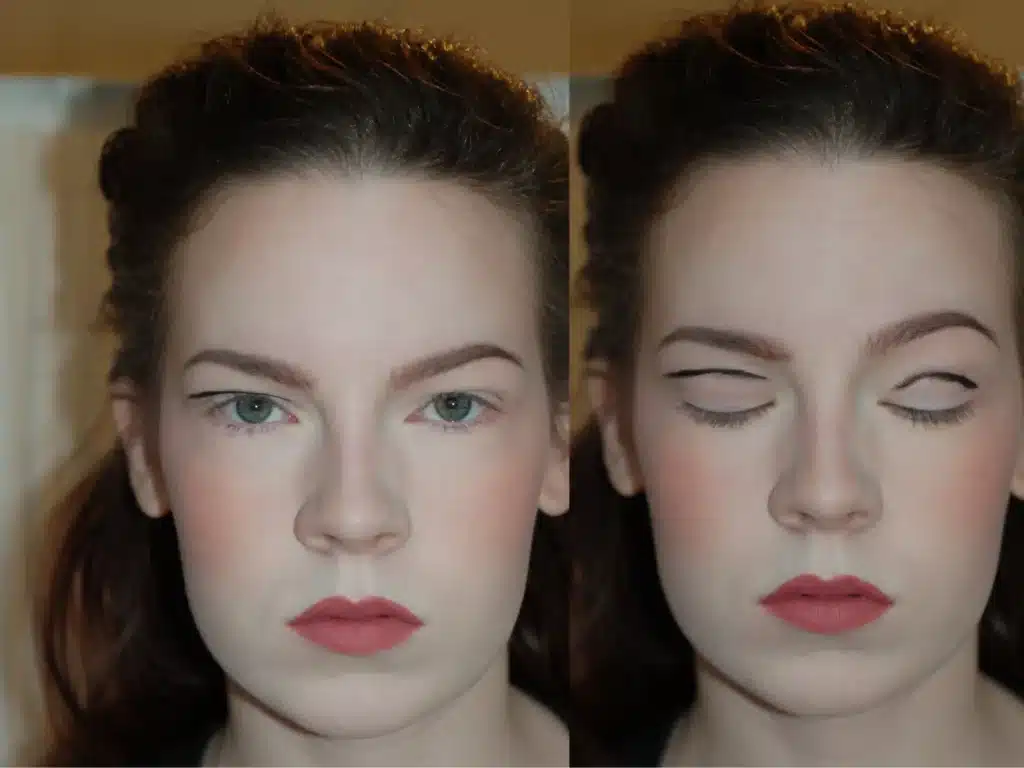
The difference between hooded and non-hooded eyelids primarily lies in the visibility of the eyelid crease and the amount of visible eyelid space.
Eyelid Crease
In hooded eyelids, the crease is either partially or entirely obscured by an excess of skin from the brow bone. This gives the appearance of a more minor or ‘hooded’ eyelid. Non-hooded eyelids have a visible crease with more eyelid space showing. Any excess skin does not cover the crease.
Visible Lid Space
There is less visible lid space in hooded eyelids, making applying makeup like eyeshadow and eyeliner more challenging. Meanwhile, non-hooded eyelids have more space for makeup application, offering a broader canvas for eyeshadow and eyeliner.
Common Causes
Hooded eyelids can be hereditary or develop with age as skin elasticity decreases. In contrast, Non Hooded Eyelids is typically a genetic trait that maintains their appearance more consistently with aging, though changes can still occur.
Facial Expressions
Hooded Eyelids can sometimes give the appearance of a heavy or drooping eyelid, affecting facial expressions. In non-hooded eyelids, the more open eyelids can affect the overall facial expression, often making the eyes appear more extensive and open.
Causes of Hooded Eyelids
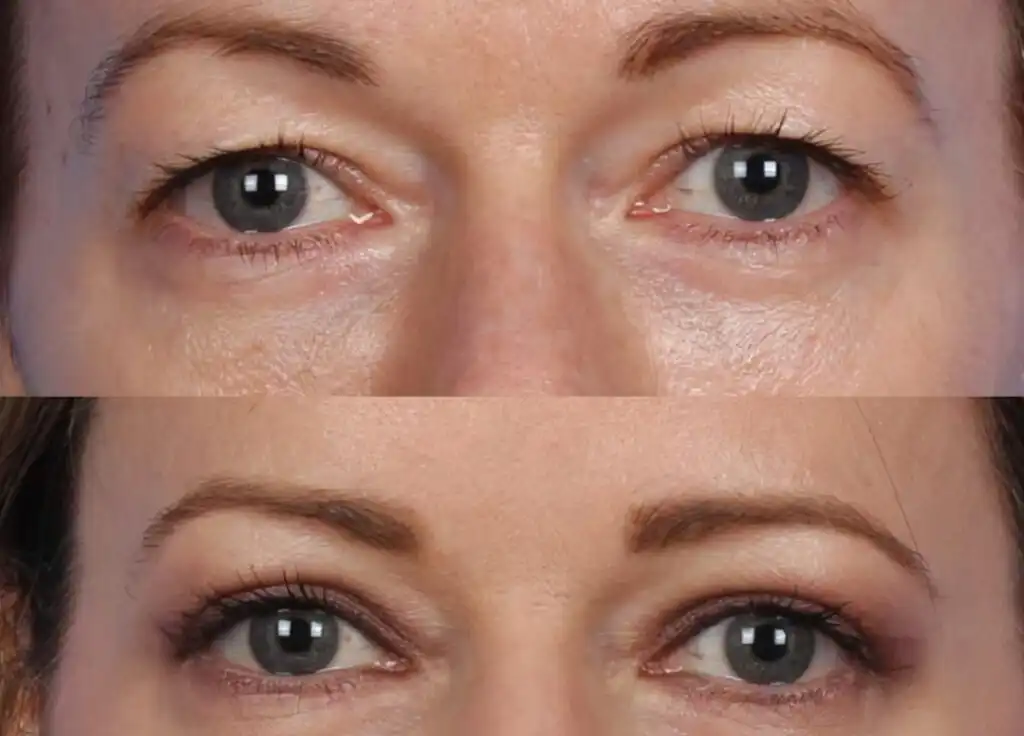
Hooded eyelids can be caused by various factors, ranging from genetics to natural aging processes. Understanding these causes is crucial for anyone looking to effectively manage or treat hooded eyelids. Here are some of the primary causes:
Genetics
One of the most common causes of hooded eyelids is heredity. If one or both parents have hooded eyelids, there’s a higher chance their children will also have this feature. Genetic predisposition determines the overall shape and structure of the eyelids.
Ethnicity
Specific ethnic backgrounds are more prone to having hooded eyelids. For example, many people of Asian descent naturally have hooded eyelids or a single eyelid without a crease, a distinct feature known as a “monolid.”
Eye Strain and Fatigue
Chronic eye strain, often caused by prolonged screen time or intense focus on close-up tasks, can weaken the muscles around the eyes. This, over time, might lead to a more pronounced hooded appearance.
Aging

As people age, their skin loses elasticity and collagen. This natural aging process can lead to the skin around the eyes becoming looser and more prone to drooping, creating a hooded appearance. The muscles around the eyes also weaken over time, contributing to this effect.
Lifestyle Factors
Lifestyle choices such as excessive sun exposure, smoking, and poor skincare routines can accelerate skin aging, leading to the early development of hooded eyelids. Sun damage, in particular, can break down collagen and elastin, hastening skin sagging.
Health Conditions
Certain medical conditions or treatments can affect the skin and muscles around the eyes. For example, thyroid conditions like Graves’ disease can lead to changes in eye appearance, including the development of hooded eyelids.
Are you curious about what 20/40 vision really means for your eyesight? Learn how 20/40 vision impacts your daily activities and explore corrective measures and eye health tips.
How Aging Affects the Eyelids?
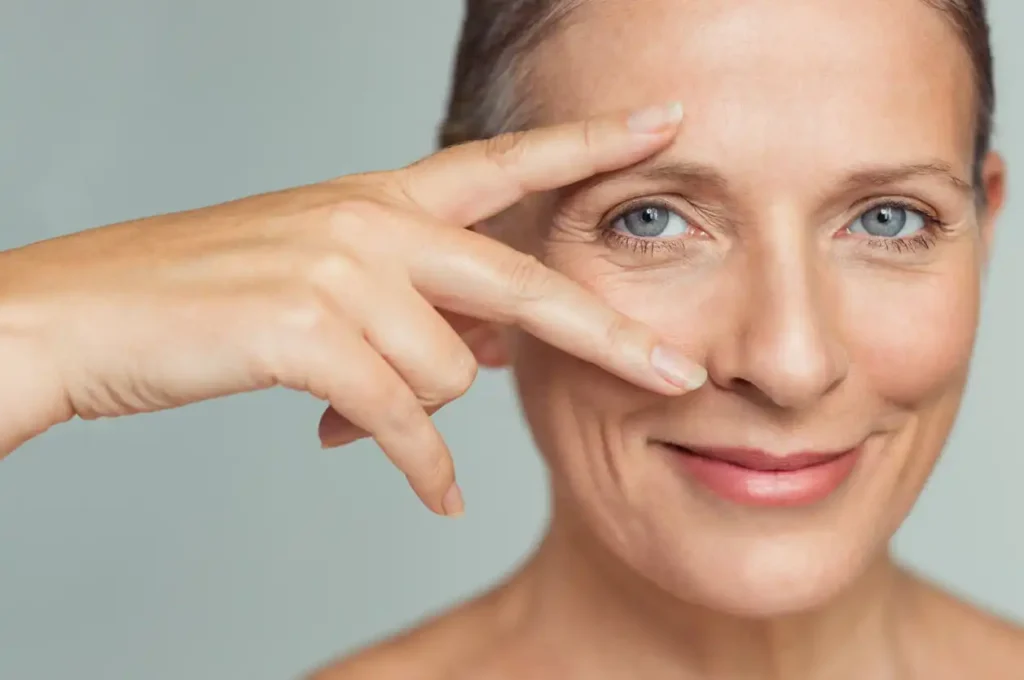
Aging is a significant factor in the development or accentuation of hooded eyelids. This change in eyelid appearance is a natural part of the aging process, and understanding how it occurs can help manage expectations and consider potential treatments.
Loss of Skin Elasticity
As we age, our skin gradually loses elasticity due to the reduced production of collagen and elastin, the proteins responsible for keeping skin firm and supple. This leads to a general sagging of the skin, including the skin around the eyelids.
Weakening of Orbital Muscles
The muscles around the eye, mainly those responsible for lifting the eyelid, can weaken with age. This weakening can contribute to the eyelid appearing more droopy or hooded.
Fat Redistribution
Aging can also cause the redistribution of fat around the eye area. Sometimes, this results in fat accumulation or puffiness in the upper eyelid, which can further contribute to a hooded appearance.
Thinning of the Skin
The skin around the eyes is thin and delicate, becoming thinner with age. Thinner skin can sag more easily, exacerbating the hooded look.
You can find out more information regarding Hooded vs Non Hooded Eyelids comparison on any of the healthcare blogs in USA.
Treatments for Hooded Eyelids
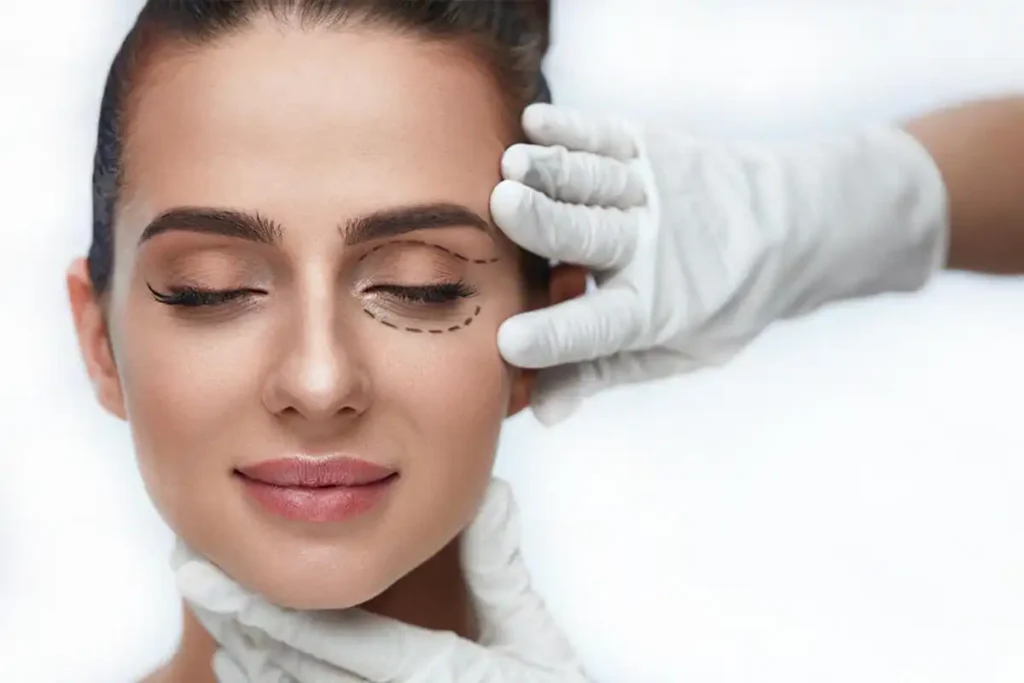
Treating hooded eyelids involves a combination of cosmetic procedures, skincare routines, and makeup techniques, depending on the extent of the hooding and personal preferences. This is particularly relevant when comparing hooded vs non hooded eyelids, as the treatment approaches can vary significantly. Here’s a comprehensive overview of the available treatments:
Firming Creams and Serums
Products containing retinol, peptides, and antioxidants can help improve skin elasticity and firmness around the eyes.
Eye Masks and Patches
These can temporarily tighten and reduce puffiness, making the eyelids appear less hooded.
Blepharoplasty (Eyelid Surgery)
This surgical procedure involves the removal of excess skin, fat, and muscle from the eyelids. It can significantly reduce the appearance of hooded eyelids and is often sought after for long-term results.
Botox Injections
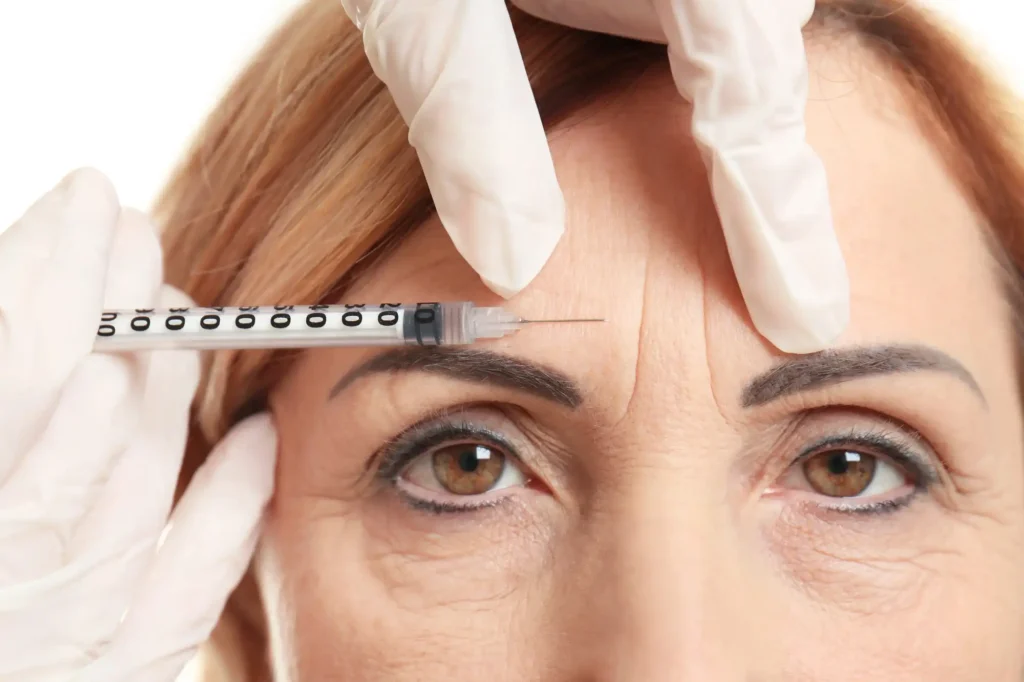
Botox can be strategically injected to lift the brow slightly, thereby reducing the hooding of the eyelid.
Fillers
Dermal fillers can restore volume in areas around the eyes and brow, indirectly reducing the appearance of hooded eyelids.
Laser Treatments
Laser resurfacing can tighten the skin and improve its overall texture, which may help with minor hooding.
Whether you’re contemplating your first Botox treatment or are a seasoned enthusiast, this guide is an indispensable resource to understand the full spectrum of Botox Before and After Eyes outcomes.
Makeup Tips and Tricks for Hooded Eyelids
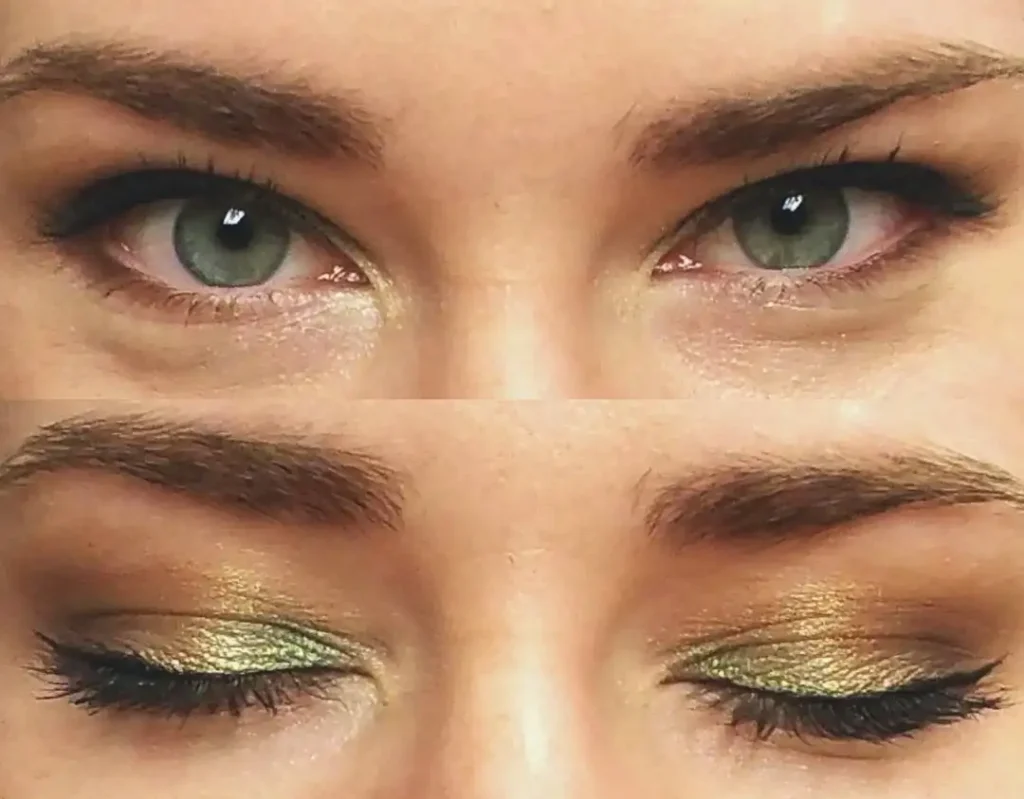
Makeup application for hooded eyes requires specific techniques to enhance and define the eye shape. Here are some tips and tricks to make the most of hooded eyelids:
Eyeshadow Application
Using matte eyeshadows to create depth in the crease can give the illusion of less hooded eyelids.
Eyeliner Styles
Thin, winged eyeliner can make the eyes appear larger and reduce the appearance of hooding.
Highlighting
Applying a highlighter on the brow bone and the inner corners of the eyes can draw attention away from the hooded area.
Mascara and Lashes
Focus on curling the lashes and applying volumizing or lengthening mascara. False lashes can also open the eye but choose styles longer in the middle than at the outer corners.
Celebrities with Hooded Eyelids
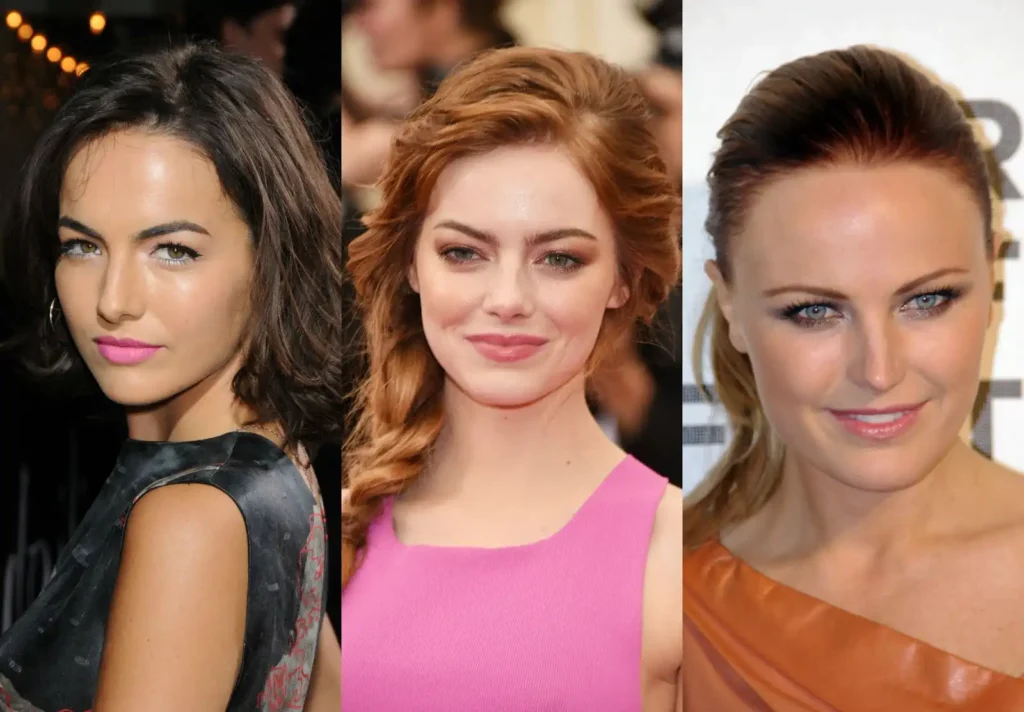
Hooded eyelids are shared across various ethnicities and backgrounds, and several well-known figures have embraced this trait, often using makeup and styling techniques to enhance their look. Some notable celebrities with hooded eyelids include:
- Jennifer Lawrence
- Blake Lively
- Taylor Swift
- Emma Stone
- Kate Hudson
- Camilla Cabello
Conclusion
In this hooded vs non hooded eyelids comparison, we explored the differences between hooded and non-hooded eyelids, emphasizing their unique characteristics and impact on eye care and makeup application. These differences arise from factors like genetics, aging, and ethnicity. We also delved into various treatments and makeup techniques for hooded eyelids, highlighting how they can be enhanced and cared for. The discussion underlined the beauty and uniqueness of both types of eyelids, encouraging a positive and embracing approach to personal eye care and aesthetics.
FAQs
What are Hooded and Non Hooded Eyelids?
Hooded eyelids feature an extra fold of skin that covers the natural crease, making the eyelid appear smaller. Non-hooded eyelids have a visible crease without this excess skin, revealing more eyelid space.
Are Hooded Eyelids Attractive?
Hooded eyelids are considered attractive. They add a unique character to facial features. Various celebrities and individuals embrace them as a distinct aspect of their appearance.
What do hooded eyelids look like?
Hooded eyelids appear as if an extra layer of skin drapes over the eyelid’s natural crease, making the crease less visible and the eyelid area smaller. This can give the eyes a more “hooded” look, especially when the eyes are open.
How To Fix Hooded Eyelids?
Hooded eyelids can be addressed with skincare products that enhance skin elasticity, specific makeup techniques to lift the eye visually, and, in more significant cases, cosmetic procedures like blepharoplasty (eyelid surgery) or non-surgical options like Botox and fillers.
How to lift hooded eyelids?
To lift hooded eyelids, you can use makeup techniques like matte eyeshadow above the natural crease and winged eyeliner to create an illusion of lift. Skincare products with firming properties and cosmetic procedures like Botox or eyelid surgery are other options for a more pronounced effect.


